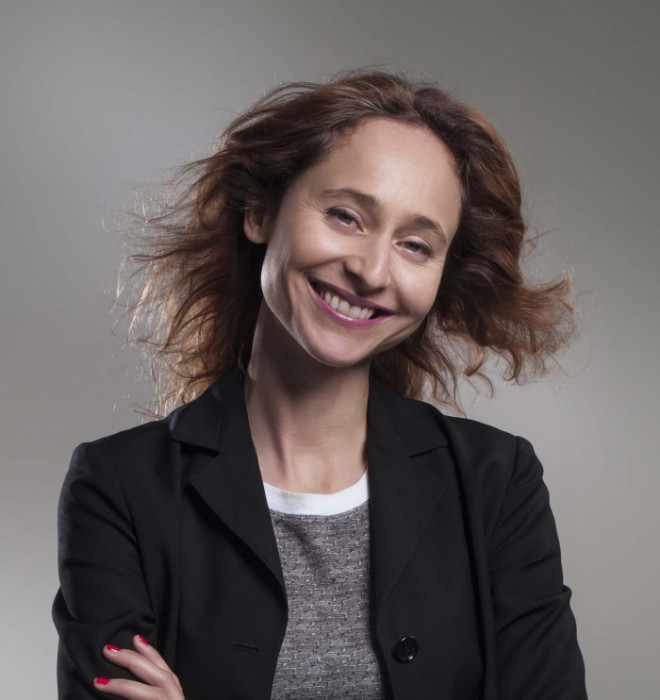
Discover the contemporary work of Béatrice BISSARA

Béatrice Bissara has lived in the world of art since she was born in 1972. Her childhood spent in museums, flea markets and the atmosphere of auction rooms with her father, a classical art connoisseur, forged her taste for classical beauty.Yet, though she never left that familiar world far behind, it took her several years to discover her creative vocation.After studying finance and management, political science and the history of art, she went to work for a modern art dealer and then began appraising old pictures, especially from the seventeenth and eighteenth centuries, at Sotheby's. Being thoroughly trained in the History of Art but self-taught in practice, she did not begin painting and sculpting until 2000, without forsaking her 10-year-old interest in wet-plate photographs developed primarily in black and white.Her passion for volume and color even prompted her to take evening stylism courses at the Chamber de Couture and modeling courses at the Rose Bertin High School in Paris.In that period she frequented different studios in search of a teacher of the art of design, painting or sculpture. But she wound up learning her craft "on the job" by working with models and by means of meetings which had a decisive impact on her vocation. Her meeting with the sculptor Petrus, who devotes himself almost entirely to stone-carving in his studio in the district of Paris, initiated her into anatomy and measurement.She has been exhibiting since 2002 in galleries and shows, including the Independent Artists' show, the SNBA show at the Carrousel of the Louvre, the French? artists show at the Grand Palais in Paris also. She is permanently presented at the Galerie Got in Paris.Now concentrating on sculpture in bronze and sometimes transparent resin, she pursues her quest for beauty, balance and harmony of bodies, faces and souls in figurative art.Still desirous of giving her work a spiritual dimension, she is working on a set of sculptures revisiting the faces of biblical characters.Béatrice Bissara's sculptures are attractive primarily for their classical beauty and balanced sensuality, and the harmonious gentleness of their forms. From her childhood spent in the museums to her past as an expert in classical works, she has loved and known the work of the greatest artists. From Canova to Rodin, from Michelangelo to Puget, the artist derives her inspiration and her will to master the "logical beauty of forms" (to quote Octave Mirbeau*) from the genius of those commanding figures.She is drawn to anatomy, in particular human anatomy, and fascinated by the extraordinary complexity of its geometry and mechanics. The perfection of the living organism, from the universe to the smallest molecule, convinces her of a metaphysical order of the universe, and she knows that statuary art requires perfect familiarity with the truth of the human body in order to grasp the miracle of its proportions and balance. She accordingly works on it ardently, conscious of finding in that knowledge ways and means of freeing up her know-how.Alive to sensitivity, she likes the direct contact of matter, of plaster and clay, from which she brings forth her models before taking them to the foundry.A reflection of its creator's personality, Béatrice Bissara's art is demanding work which cannot be reduced to the pure attraction of formal beauty. A sensitive humanity, a living and vibrant grace transcending that of matter flickers, glimmers, crowds. behind the models' posture and harmonious curves. Béatrice Bissara sees much more than shapes and features when she sculpts a woman's body and face. They deliver a reality which is as emotional as carnal. They become interior movement, the expression of an intimate, tumultuous, passionate and questioning world. They answer a metaphysical call by virtue of which, says the artist, "the body is no longer the reflection only of the tangible but also of the spiritual world to those who are not blind to it". Her most recent works, inspired by religious texts, like her interpretation of the "Yetser Hara" (the "baser instincts" represented by a snake in the Torah), unquestionably express the faith which supports and underlies all of Bissara's work. But at the same time, pursuing a constant search for beauty, her sensual and intellectual work moves toward a recaptured and assumed liberty, a burgeoning serenity.Rodin said that art is the most sublime mission of mankind". Bissara's "benevolent" and faithful perception of her models adapts that mission to the taste of a new day. She gently gives us the keys which open our eyes to human otherness, truth and intrinsic beauty. She offers that beauty as a message of hope and - beyond that - salvation.Béatrice Bissara, basically an esthete, is convinced that beauty buoys humanity toward the heights, that it is a school of both strictness, humility, patience and meditation. For the beautiful, she says, is not easily attainable, does not tarnish and crafts itself.Because it speaks to that mystery of beauty in its universal recognition, Bissara's art is timeless, weaving invisible but tangible ties to all the feminisms of the world, all the golden ages of the History of Art, all the spiritual nourishments.*Des Artistes, Flammarion, 1922-1924, Paris, volume 1.2002 Exposition collective, Atelier Galerie DZ Art, Paris 11è2003 Salon d?Auteuil2005 Galerie Saint Maur2006 Carrousel du Louvre, SNBA Espace Châtelet, Salon Violet Grand Palais, Paris, Art en Capital, Salon des Artistes Français Exposition collective, New York, Waldorf Astoria & Beverly Hills Salon des Indépendants, Espace Champerret En permanence Galerie Frederic Got, Rue Saint Louis en l?Ile, P






































































